-
Car Reviews
- All reviews
- Midsize SUVs
- Small cars
- Utes
- Small SUVs
- Large SUVs
- Large cars
- Sports SUVs
- Sports cars
- Vans
Latest reviews
- Car News
-
Car Comparisons
Latest comparisons
- Chasing Deals
It’s a facelift without an engine upgrade or exciting new grade to drum up excitement. Instead, the 2024 update is for the ‘true believers’ of the D-Max
Last year, Isuzu shocked many pundits when it raced past the horde of other manufacturers in Australia’s congested new car market to become the country’s 10th-best selling brand.
And in a real shock to some long-established players, the Isuzu D-Max ute was Australia’s third-best selling vehicle overall.
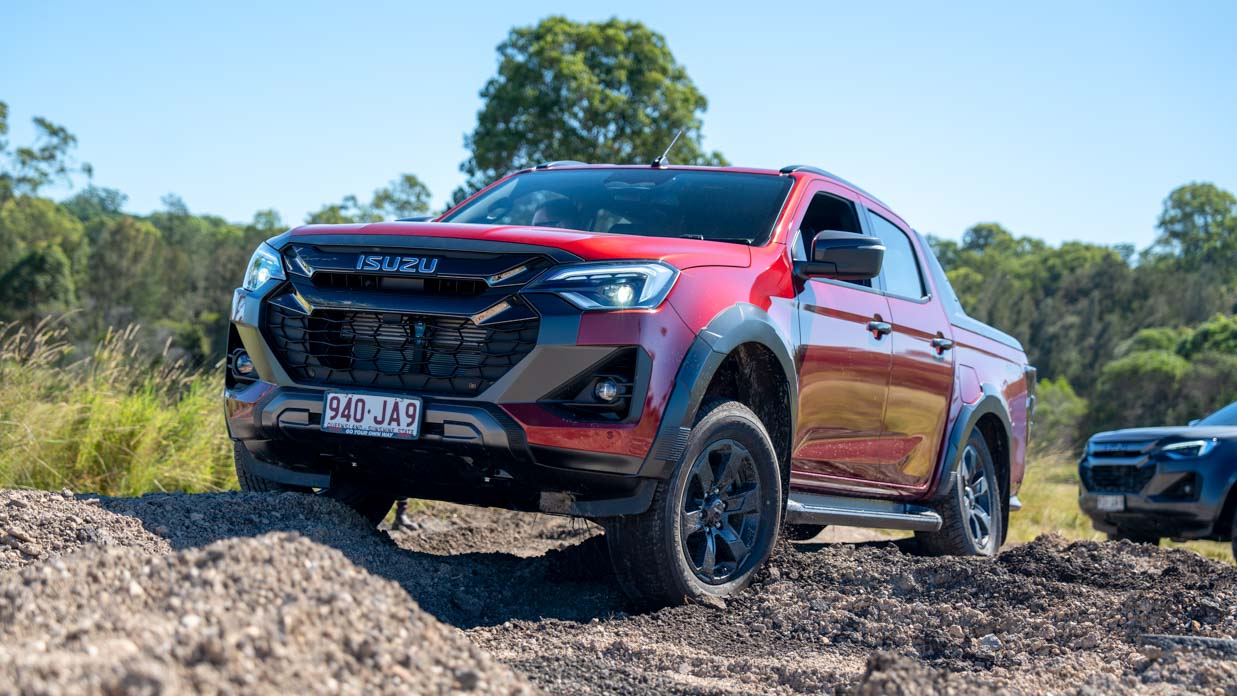
Clearly, Isuzu had its finger on the pulse of what Aussies needed and wanted in a new ute – at least in 2023. What local customers want in 2024 and beyond will be different.
What they’ll want of course is ‘more’, of everything really, and you can count on car makers to charge accordingly. But the competition is already heating up.
The still fresh Ford Ranger is not just the best-selling vehicle in Australia, it’s objectively one of the best vehicles in its segment.
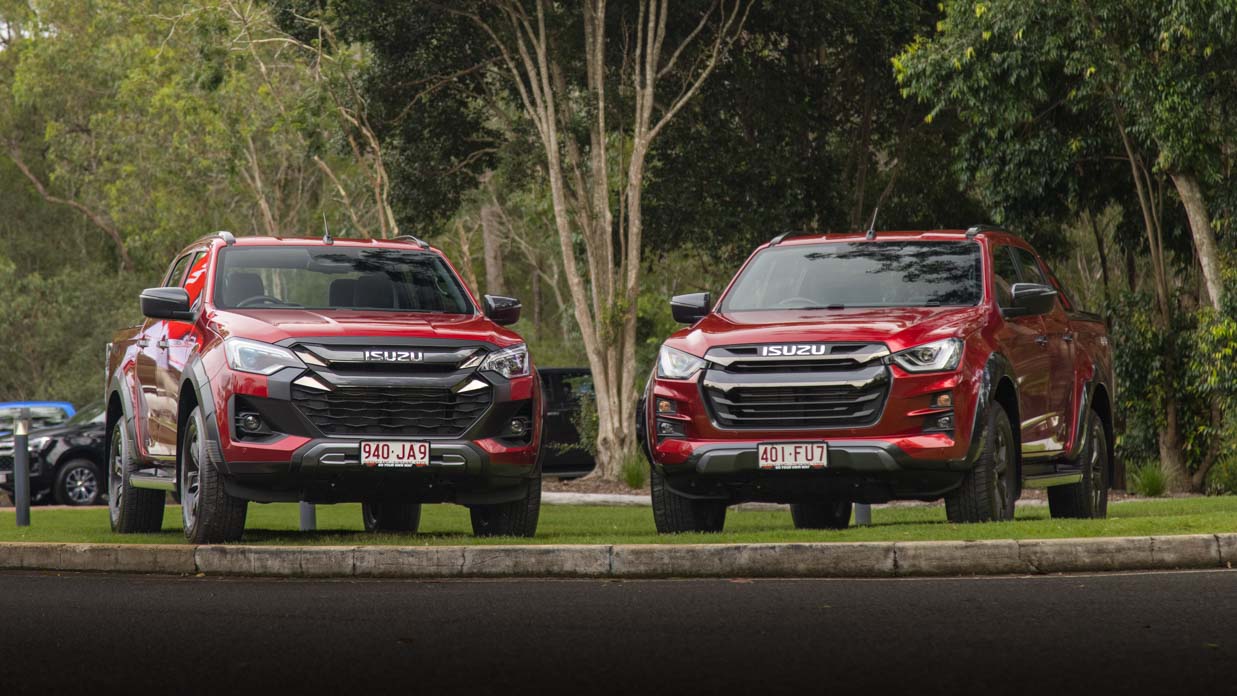
The new (left) vs old (right) D-Max
The Volkswagen Amarok is up there, and the new-gen Mitsubishi Triton has now evolved into a bigger and more capable ute – with a price that undercuts the D-Max.
After launching globally in 2019, it’s likely the global third-generation D-Max will continue onto 2027. In an effort to keep its ute relevant, Isuzu has prioritised a litany of small but meaningful changes as a result of customer feedback.
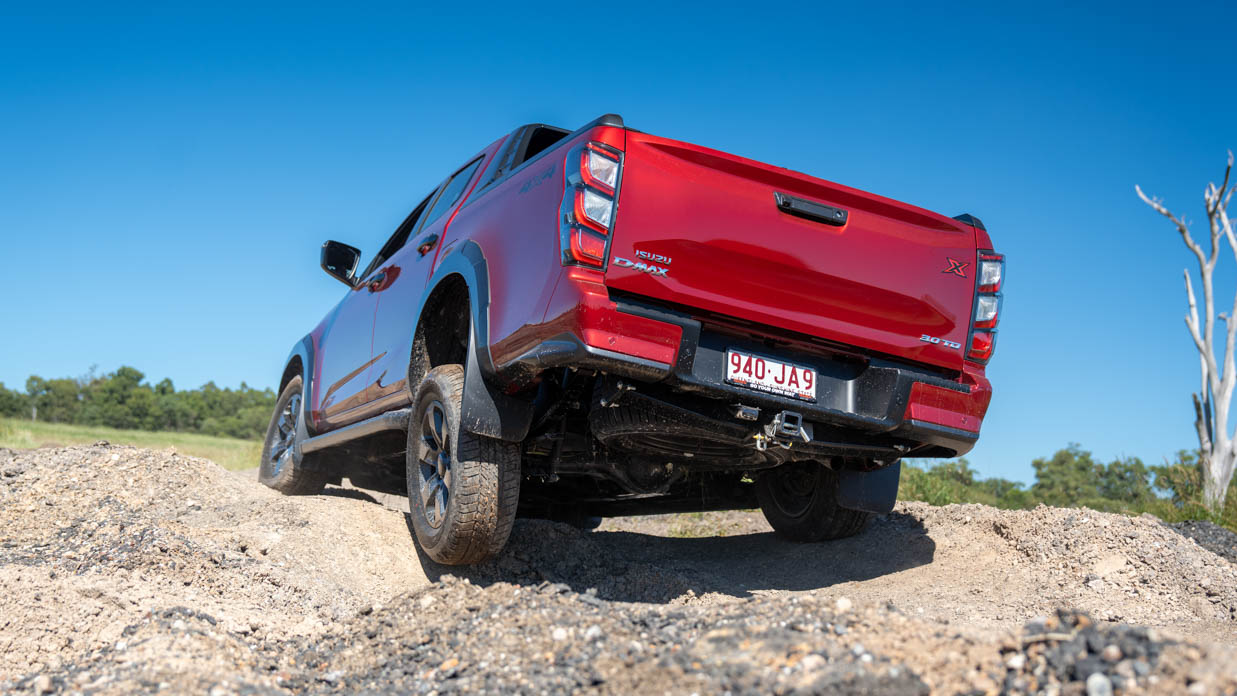
These changes include a slicker multimedia system, significantly better traction control off road (as-tested) and an expanded (and less intrusive) safety suite.
But these small changes, Isuzu says, add up to a comprehensive upgrade that the car maker believes are worth upgrading to if you’re already seated in a pre-facelift model.
Are they right? Let’s find out.
When it comes to D-Max pricing, there’s no such thing as a free lunch. The latest upgrades come at a cost with a price increase of between $500 and $2000 depending on the grade.
The D-Max range consists of the tradie-focused SX along with the more family-friendly LS-M, X-Rider, LS-U, LS-U+ and X-Terrain grades. The D-Max continues to offer both a six-speed manual and automatic transmission option.
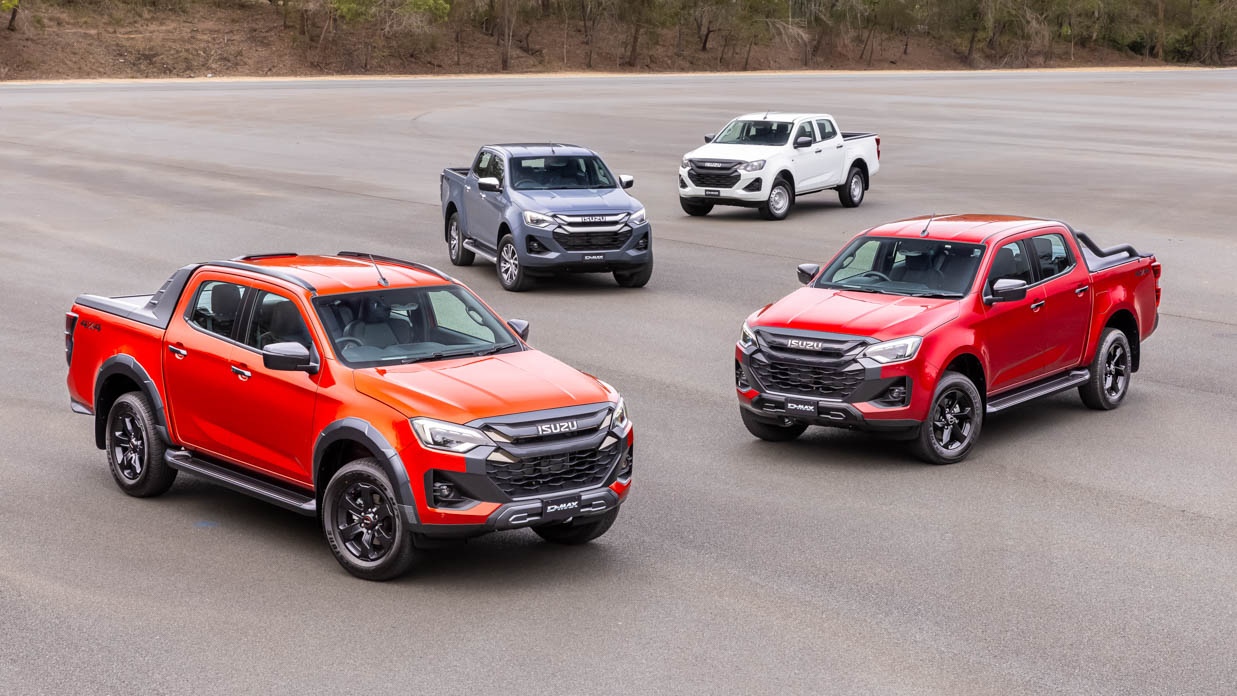
The X-Rider was previously a temporary addition to the range and it’s now been made permanent. Based on the LS-M which has now moved to a softer rear suspension setup, the X-Rider features similar styling to the X-Terrain.
Isuzu offers a 1.9L 110kW/350Nm turbo-diesel four cylinder on the SX grade exclusively, a 140kW/450Nm 3.0L version is also offered across the entire range. A six-speed manual and automatic transmission are offered with both engine types.
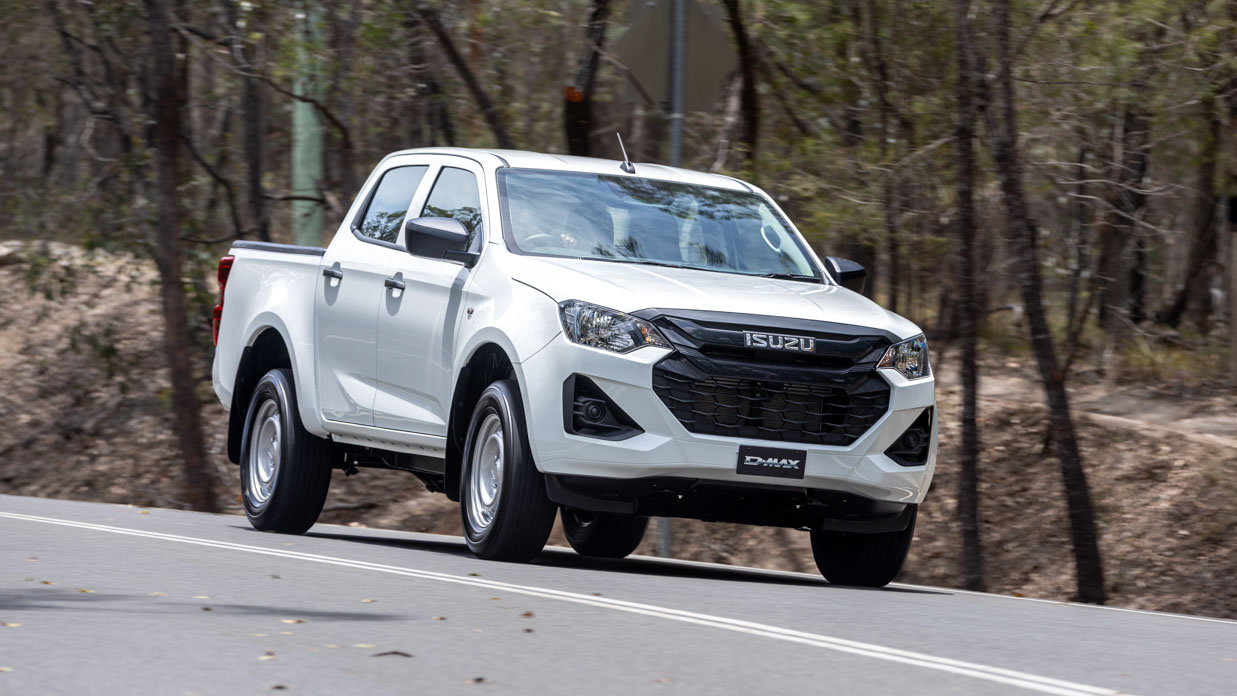
As standard, the SX grade includes the following highlighted features:
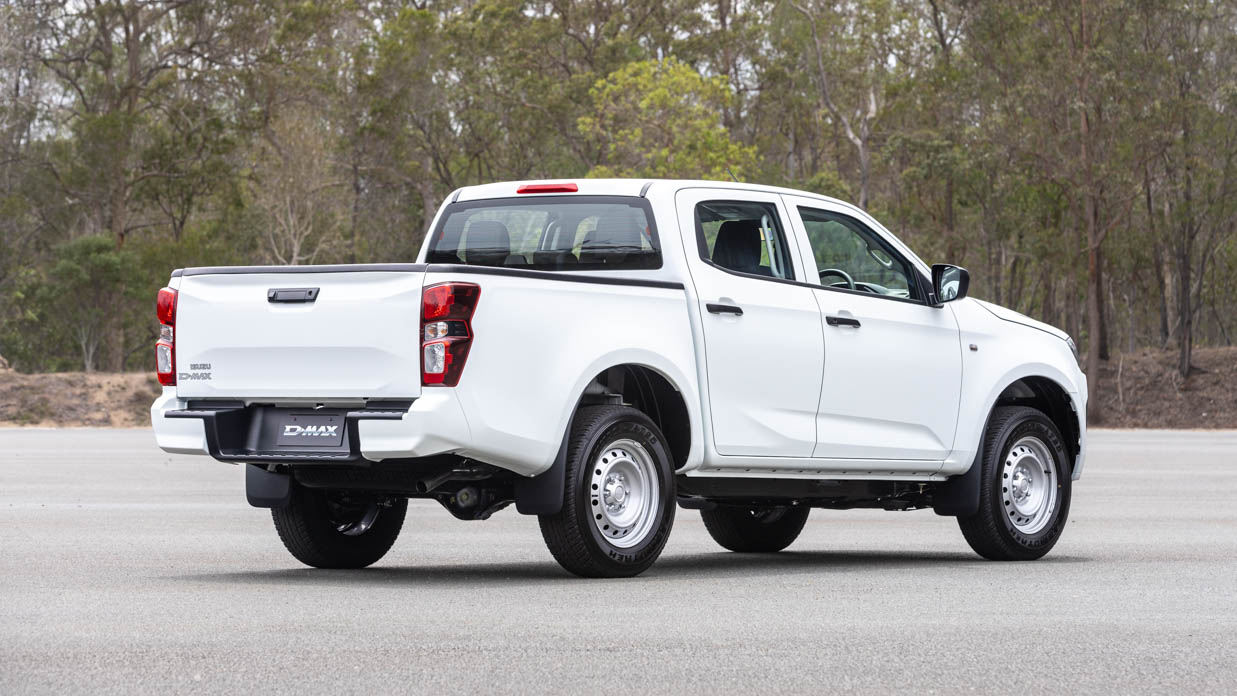
The LS-M adds:
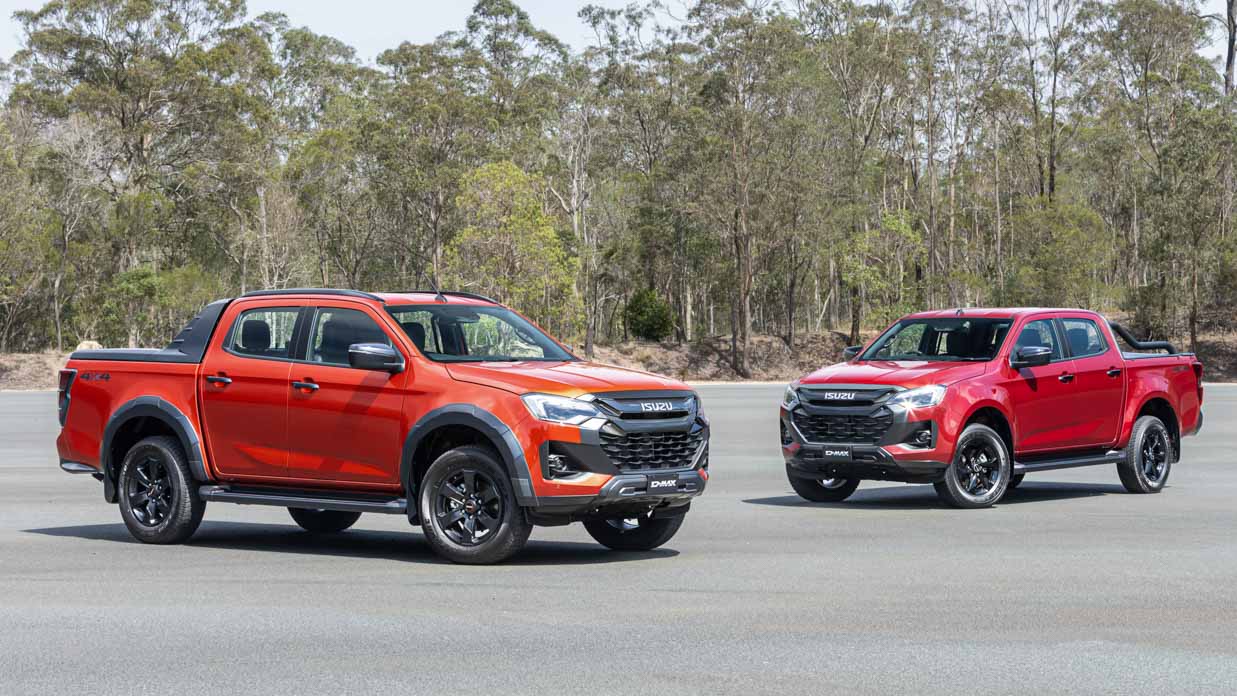
The D-Max X-Rider (right) offers X-Terrain-like looks at a lower price point
The X-Rider adds:
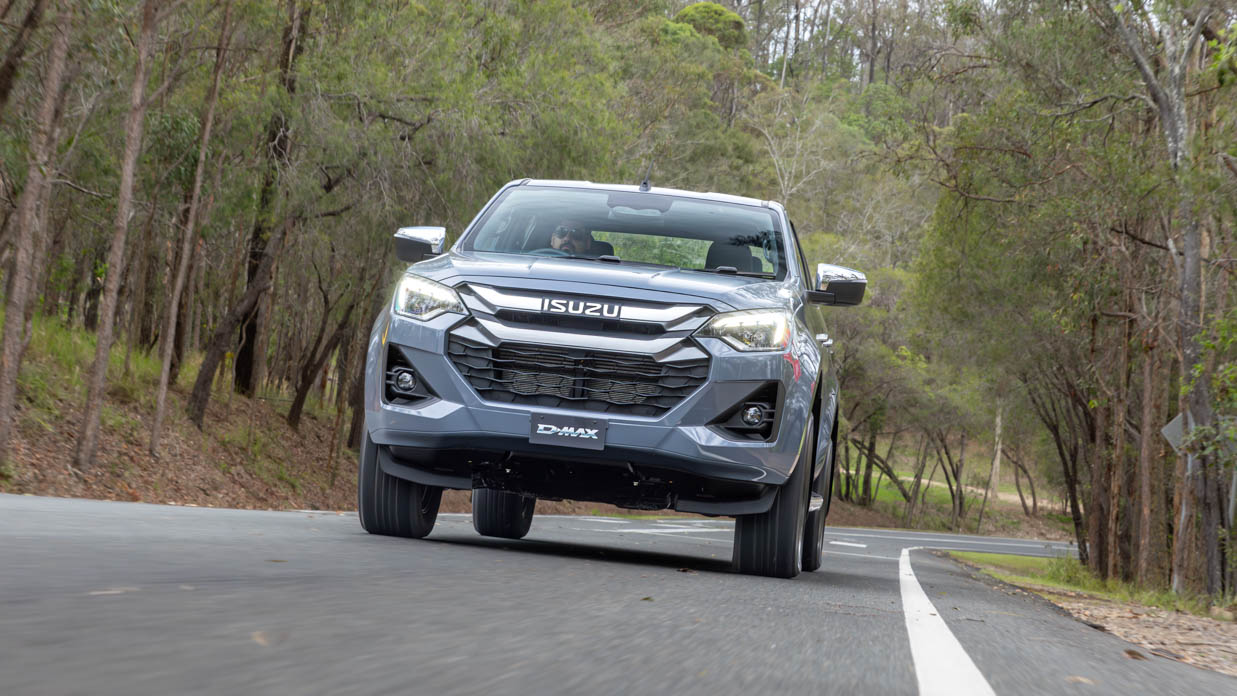
The LS-U adds:
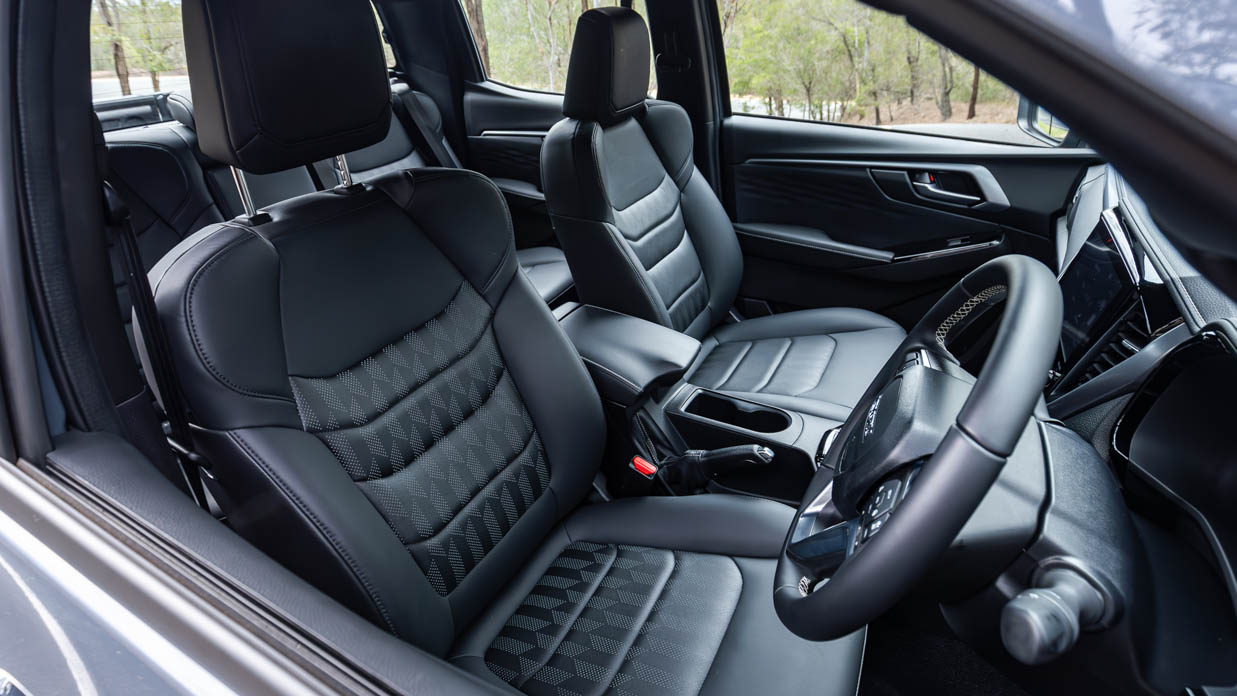
The LS-U+ adds:
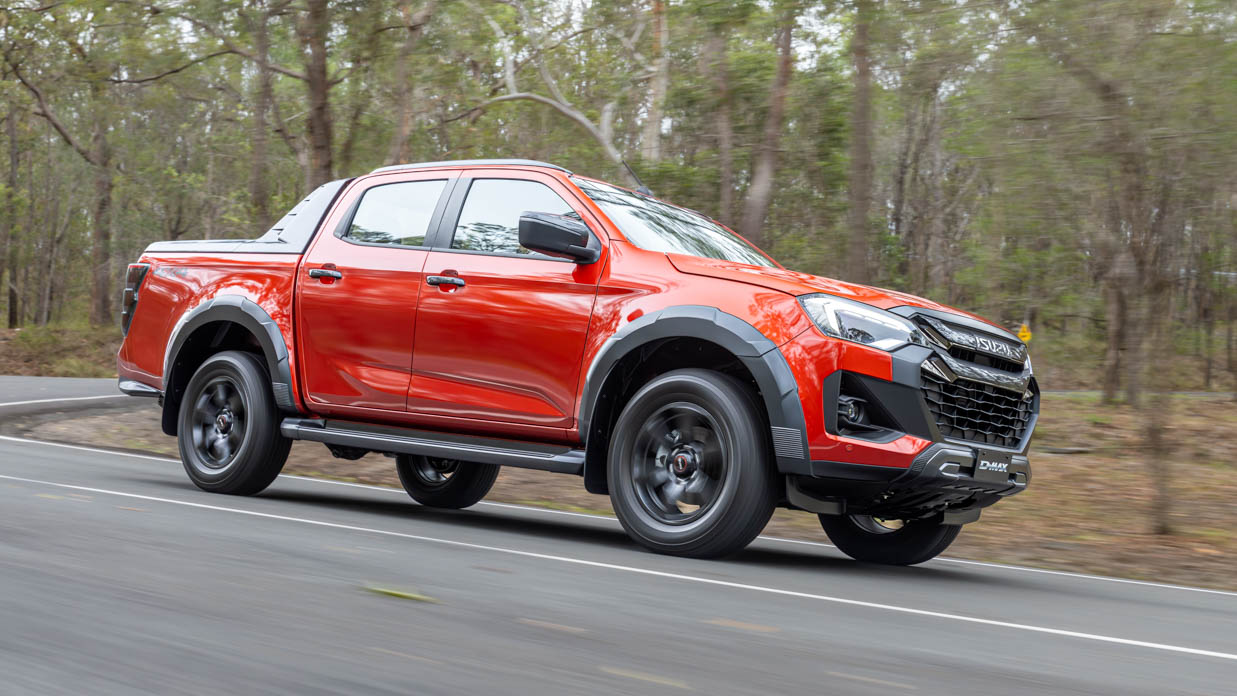
Finally, the X-Terrain adds:
Before we get into what has changed, let’s start with what hasn’t.
The engines, steering, suspension, transmission and brakes all remain unchanged. If you’ve got a D-Max already, expect it to drive very much the same.
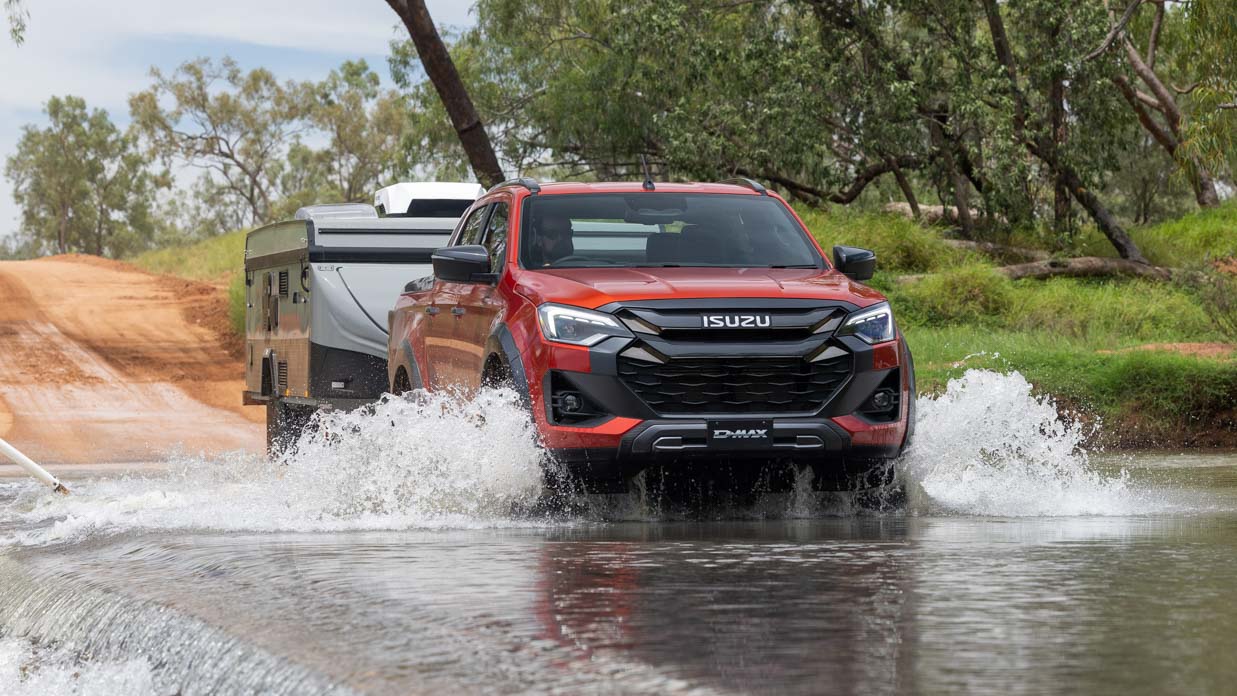
But that doesn’t mean a total absence of FOMO, because the little refinements to the 2024 D-Max do add up. If you are thinking about upgrading an older ute, this could be an interesting proposition.
The pre-facelift D-Max hit a reasonable balance between on-road competency and off-road capability, but in the face of newer competition it’s certainly not class leading, especially when it came to refinement from aspects such as the ride and the 3.0L turbo-diesel engine.
Isuzu’s 3.0L still puts out the same 140kW of power at 3600rpm, while the 450Nm torque peak is available from 1600 to 2600rpm, and a good amount of that grunt is available either side of those figures.
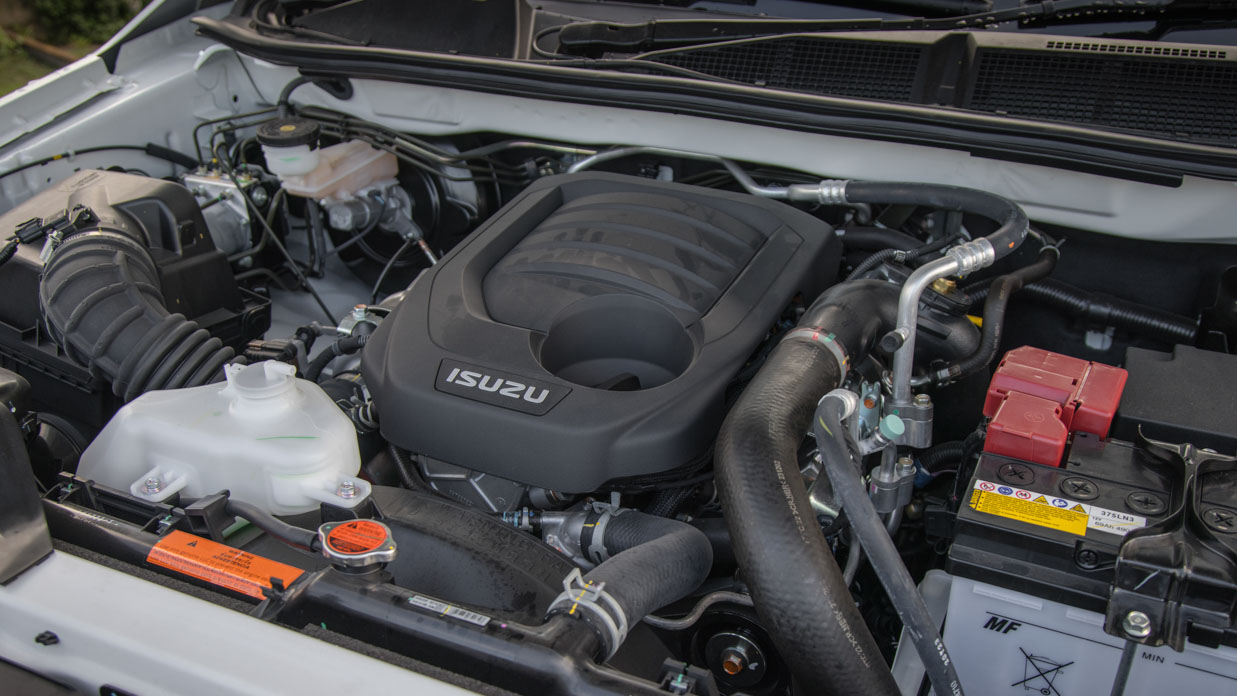
The value of the 3.0L turbo-diesel goes beyond its numbers, it’s bullet-proof and de-tuned, likely well below its true capability, but even still there is room for improvement.
In short, its on-and-off torque delivery is lethargic compared to twin-turbo four-cylinder setups from Mitsubishi, Nissan and Ford put out the same amount of grunt (or more) in a far more user-friendly fashion.
And that’s to say nothing of rivals that give you the luxury of a V6 engine’s power.
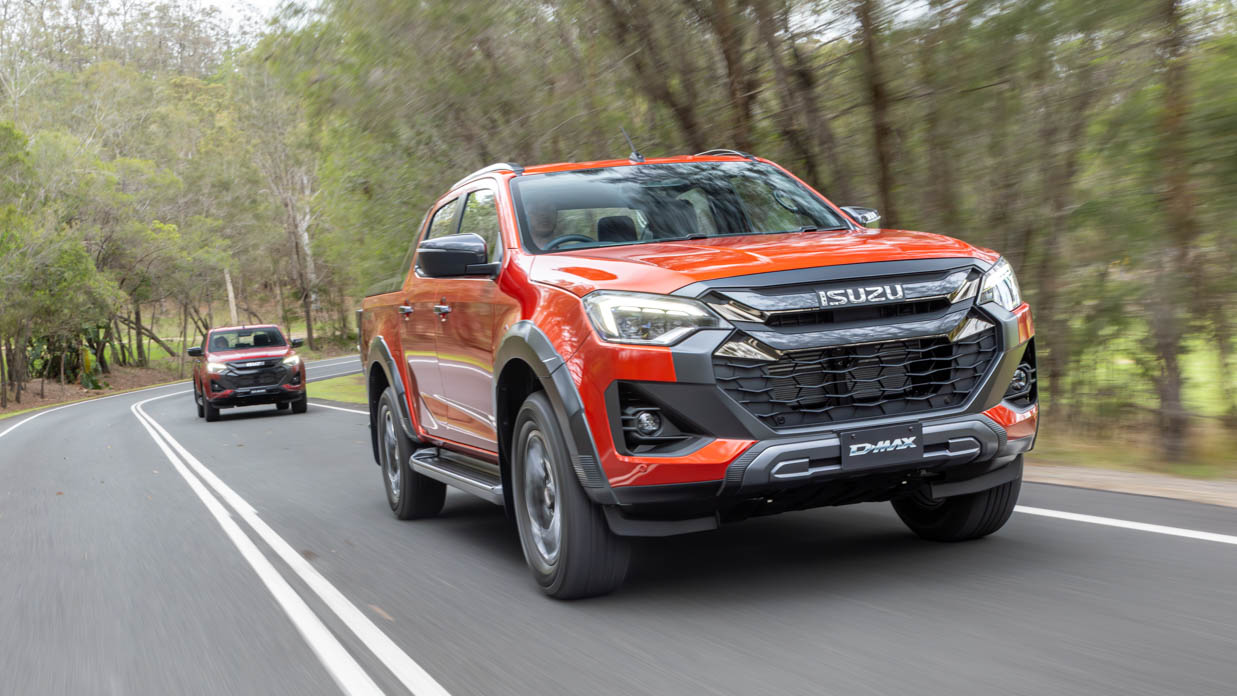
While it might be fun enjoying that kick in the back when pulling onto the highway, if you find yourself circling suburbia in the rain on mud terrains, you’re likely to feather the throttle a great deal, especially considering the D-Max exclusively retains a part-time 4WD system unlike rivals from Ford and Mitsubishi.
With the transfer case in two-wheel drive mode – as it must be on the road – rain or a loose surface still sees a D-Max fishtail too much. Rivals like Triton, Ranger and Amarok all offer automatic four-wheel drive systems for much better traction on the road.
That’s not to say the 3.0L is without merit, it’s still a great unit overall, particularly when it comes to towing.
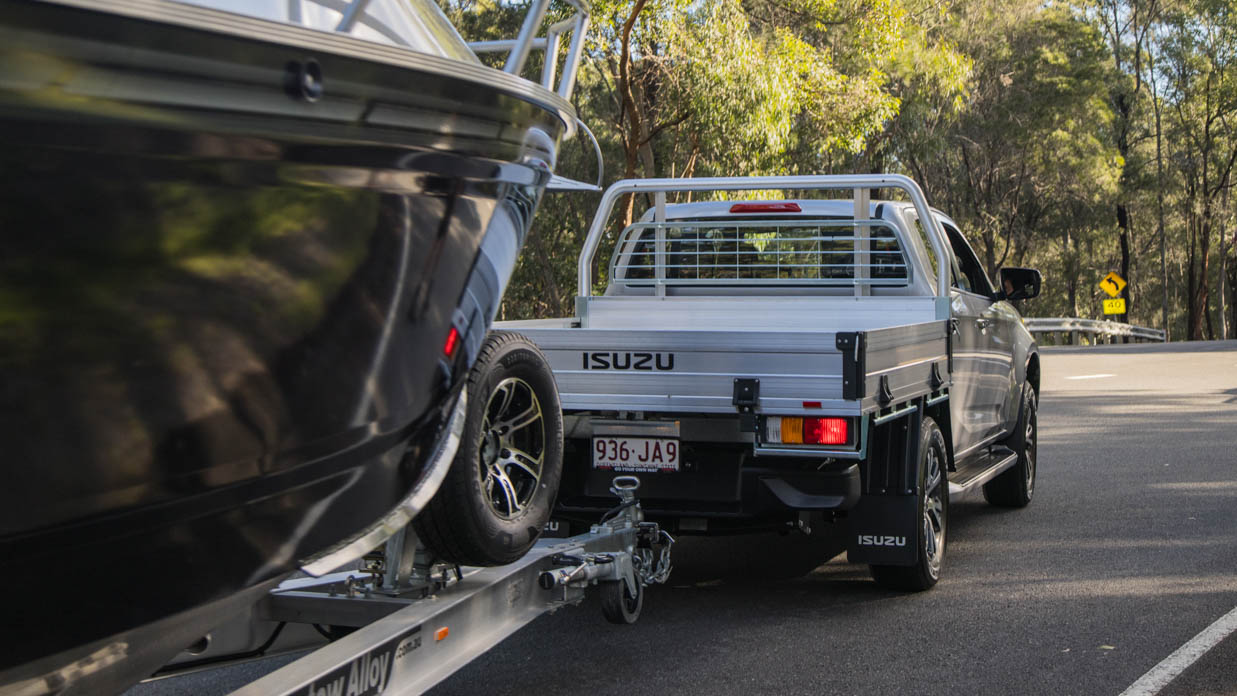
During our initial drive we hitched up to a variety of boats and caravans weighing up to 3.2 tonnes and the relatively effortlessness of this four-cylinder engine is commendable.
We’ve also spoken with towing experts since who have commended the D-Max’s ability, not just in a straight line but also due to its ample payload and GCM, in a complete contrast to the Toyota Hilux.
With an incredibly large displacement for its modest cylinder count, the 4JJ3-TCX pulls hard and appears almost entirely unbothered by the additional weight. As with other aspects of driving, the Aisin six-speed automatic gearbox was fuss free and decisive.
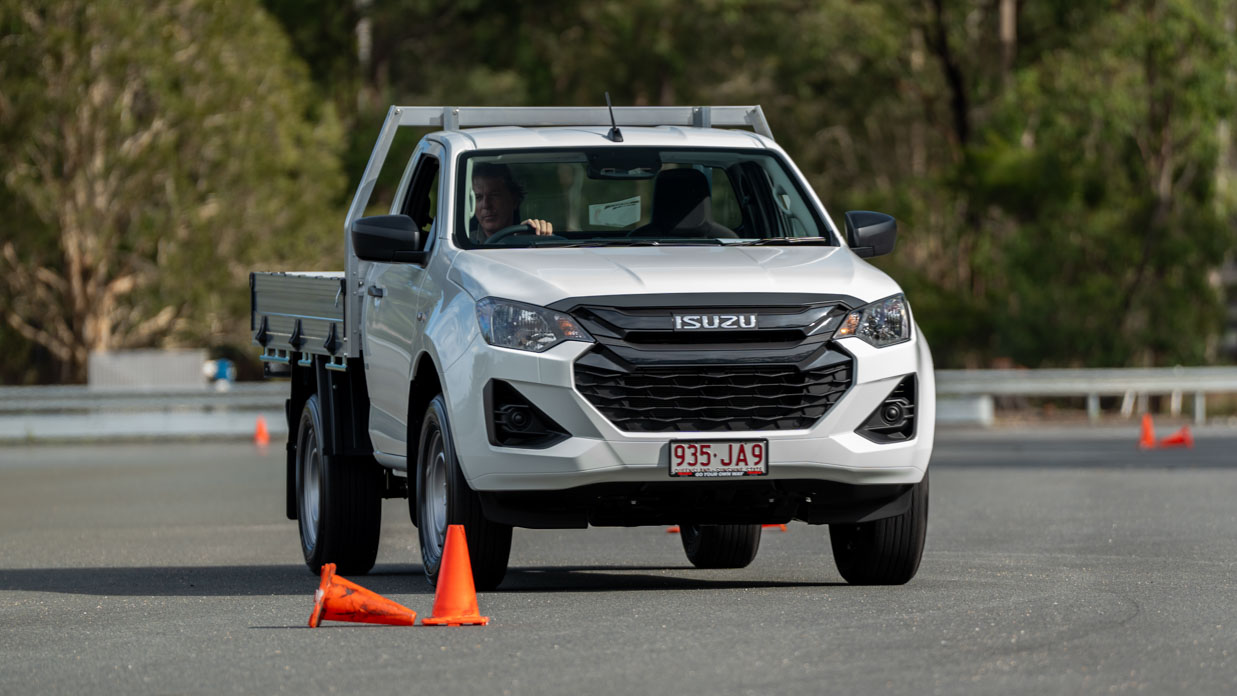
Chasing Cars briefly sampled every grade in the D-Max range but special mention must be paid to the bare-bones SX single-cab 4×2 equipped with the 110kW/350Nm 1.9L and a delightful six-speed manual transmission.
Light on its feet and easy to drive thanks to the plentiful mid-range of the 1.9L and the easy clutch up take, apprentices across the country will be happily grinding gears all the way to adulthood in one of these.
One of the big revelations for the D-Max range is that Isuzu has fitted stop-and-go adaptive cruise control across the range, and yes that includes the manual base model I just mentioned. We’ve yet to sample it in heavy traffic though, it must be said.
As before, the D-Max still boasts an impressive list of basic figures like an 800mm wading depth, 240mm of ground clearance on some models and that relaxed 3.0L generally makes small inputs a breeze.
After previously making its debut on the MU-X, the D-Max now features an enhanced traction control calibration system known as ‘Rough Terrain Mode’ (RTM) that sees the off-road ability of the ute notably improved.
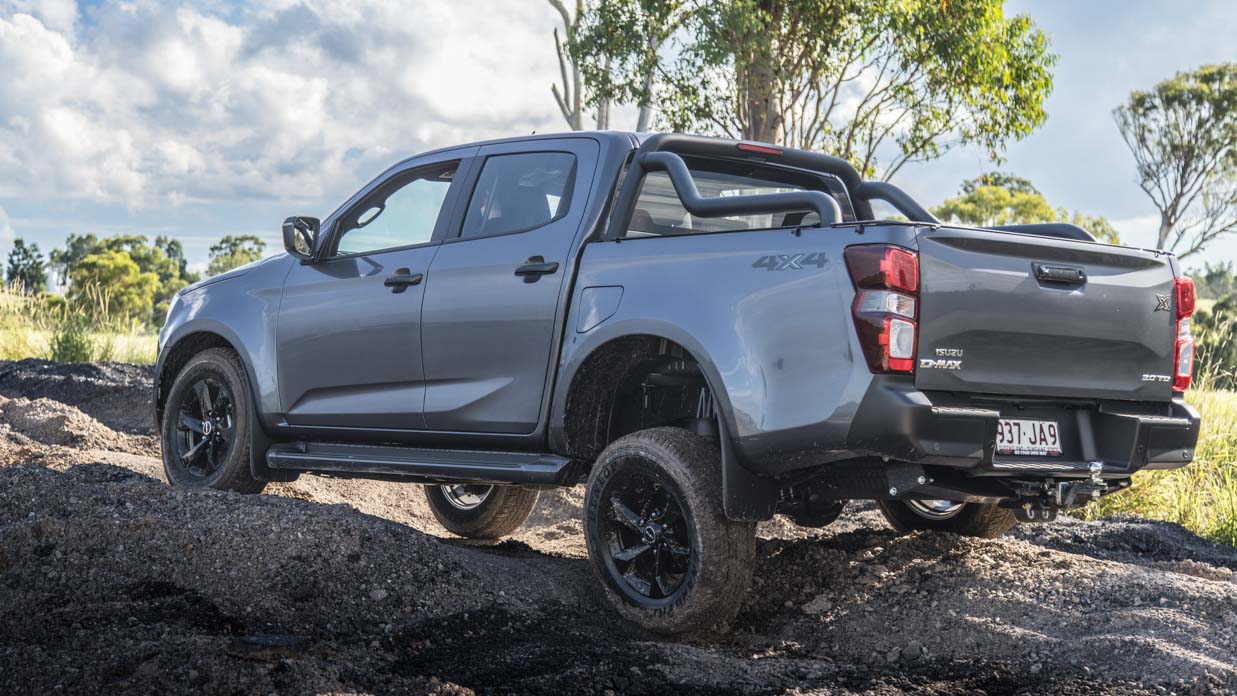
It’s still not on par with something like a Hilux, but this meaningful drive mode cuts the intervention point down to around 800-900 rpm, rather than circa-1300 rpm.
With less time spinning wheels and digging holes, and more time getting on your way, the D-Max is now a more relaxed performer where it counts.
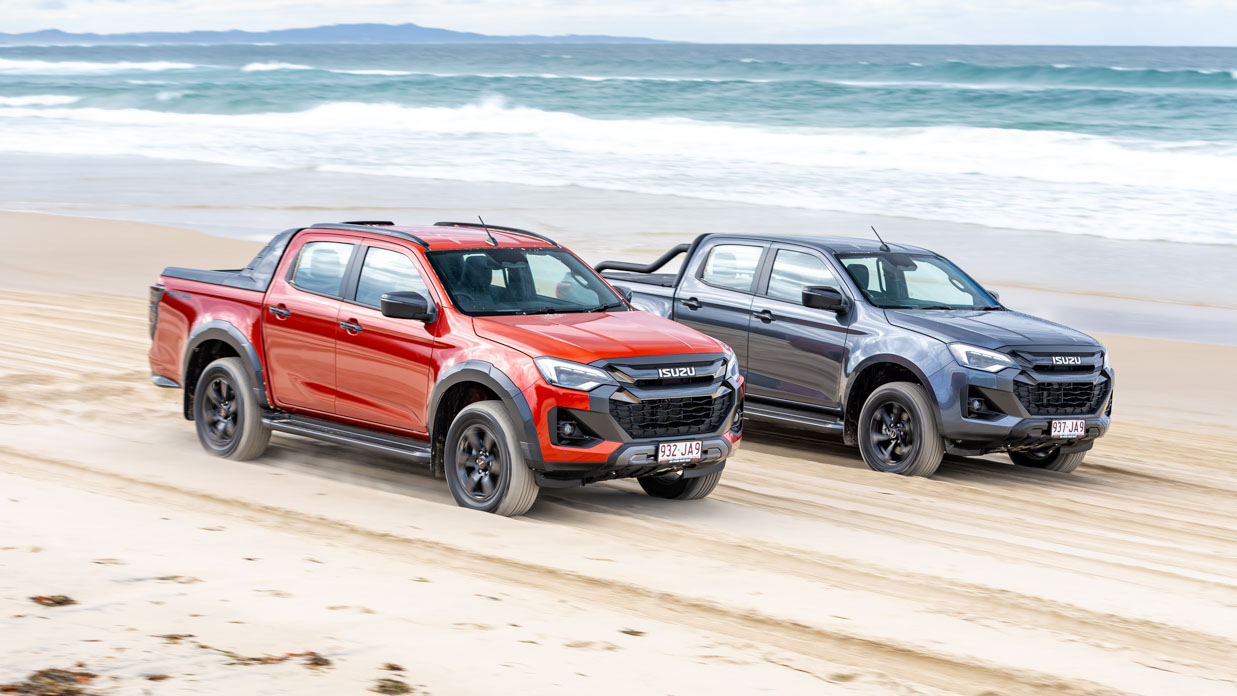
A key difference between RTM on the new D-Max vs the MU-X, is that the ute has the ability to keep the rear diff locked while the system is engaged.
It’s also notable that the system can be engaged in 2H, 4H and 4L; so if you find yourself needing a bit of extra capability on a loose surface like a boat ramp, you don’t necessarily need to chuck the D-Max in low-range.
The interior of the D-Max is where the most meaningful changes have been made.
As before, the comfortable seats and basic configuration has been retained with the majority of the changes made to the technology stack.
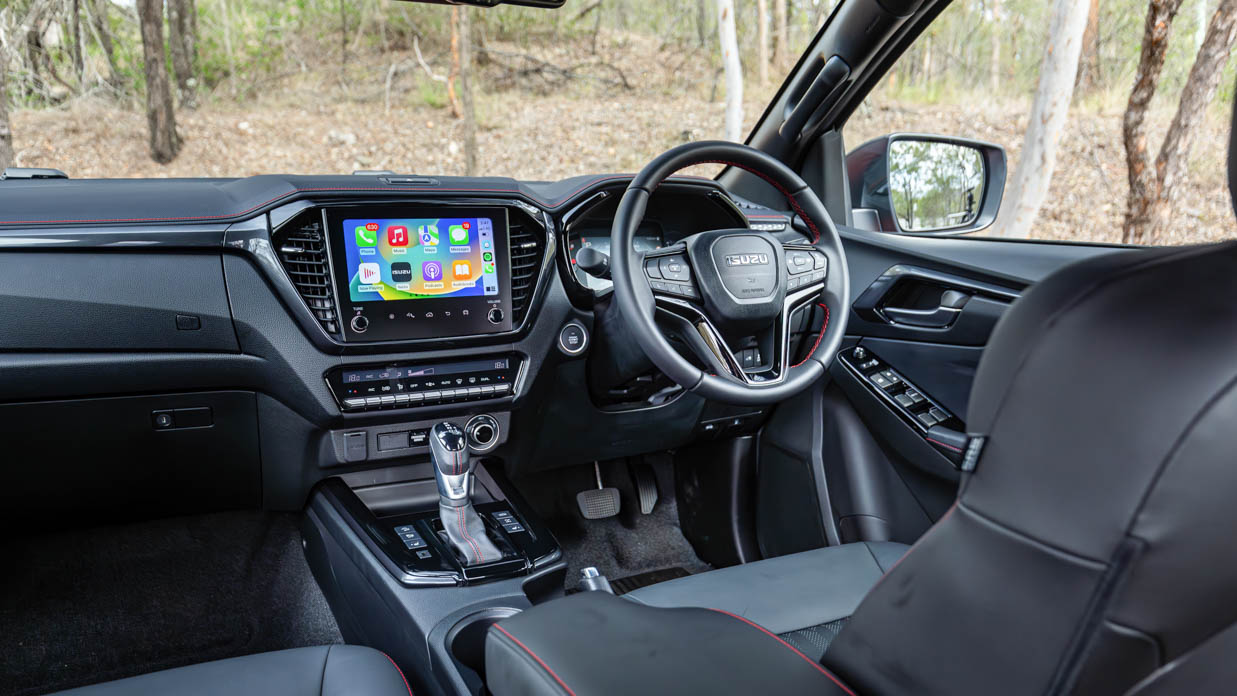
The 2023 model’s dim multimedia unit has been replaced and is offered in either 8.0 or 9.0-inches in size (compared to 7.0 and 9.0-inches).
Loading screens resolve more quickly and the operating system looks significantly more modern than before.
Both Apple CarPlay and Android Auto are wireless and the sharper screen means that buyers are able to make good use of the new reversing camera which is improved in terms of quality and its depth of field.
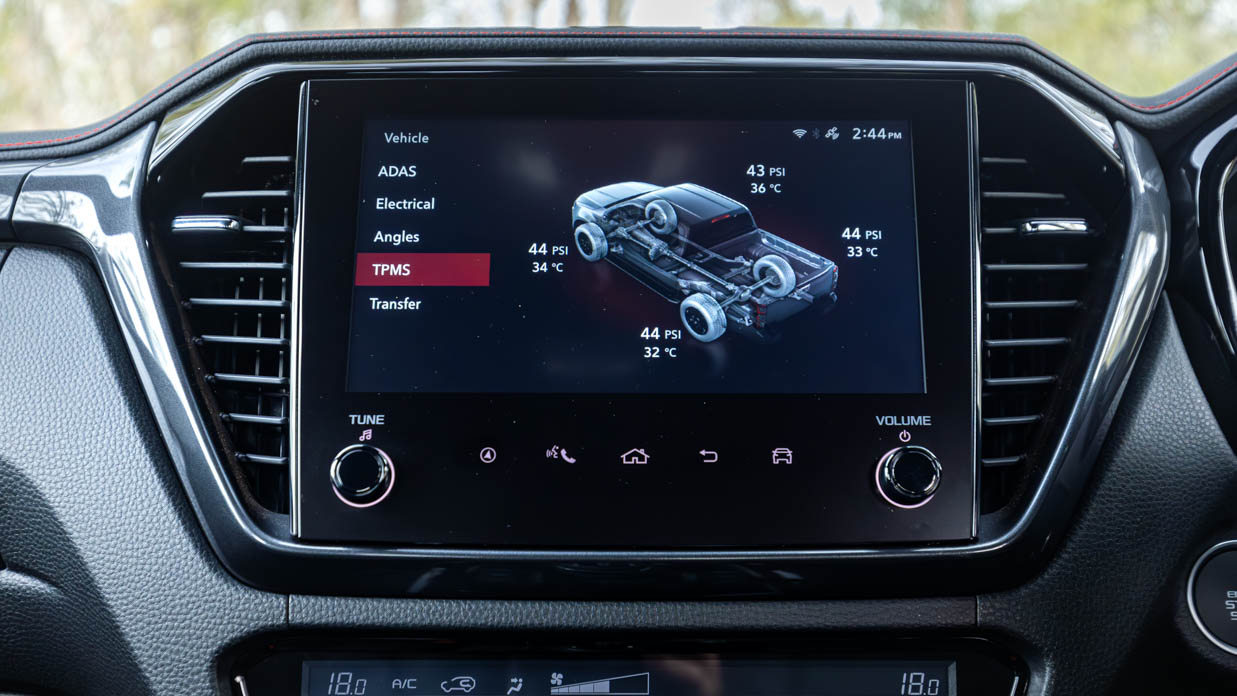
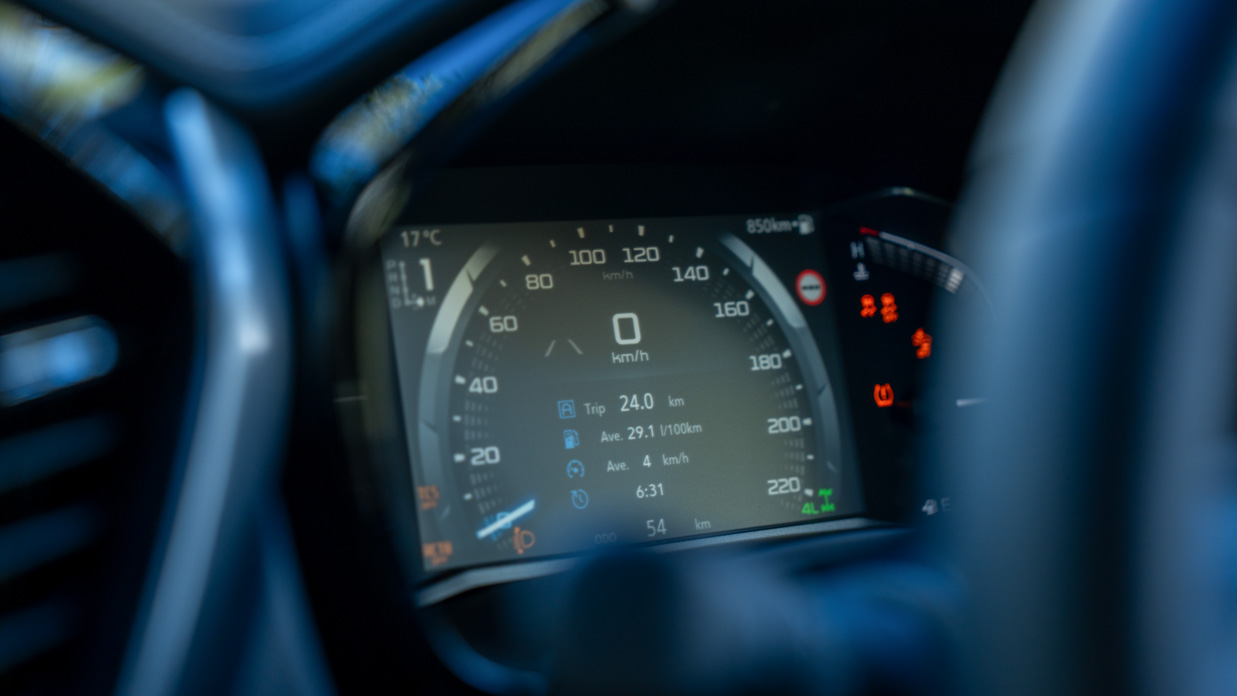
In front of the driver, an additional 7.0-inch digital driver’s display is fitted alongside some analogue dials (4.2-inch on cheaper grades) and is a good step forward for the brand, though I’m not sure the larger screen brings with it a great deal of additional functionality.
There’s still no wireless phone charger but an upgrade to 3.0A USB C points throughout the cabin is a welcome addition promising much faster charging for phones or tablets.
The seats are heated up front on higher-end models but there is still no sign of seat cooling which is arguably a more useful feature in Australia.
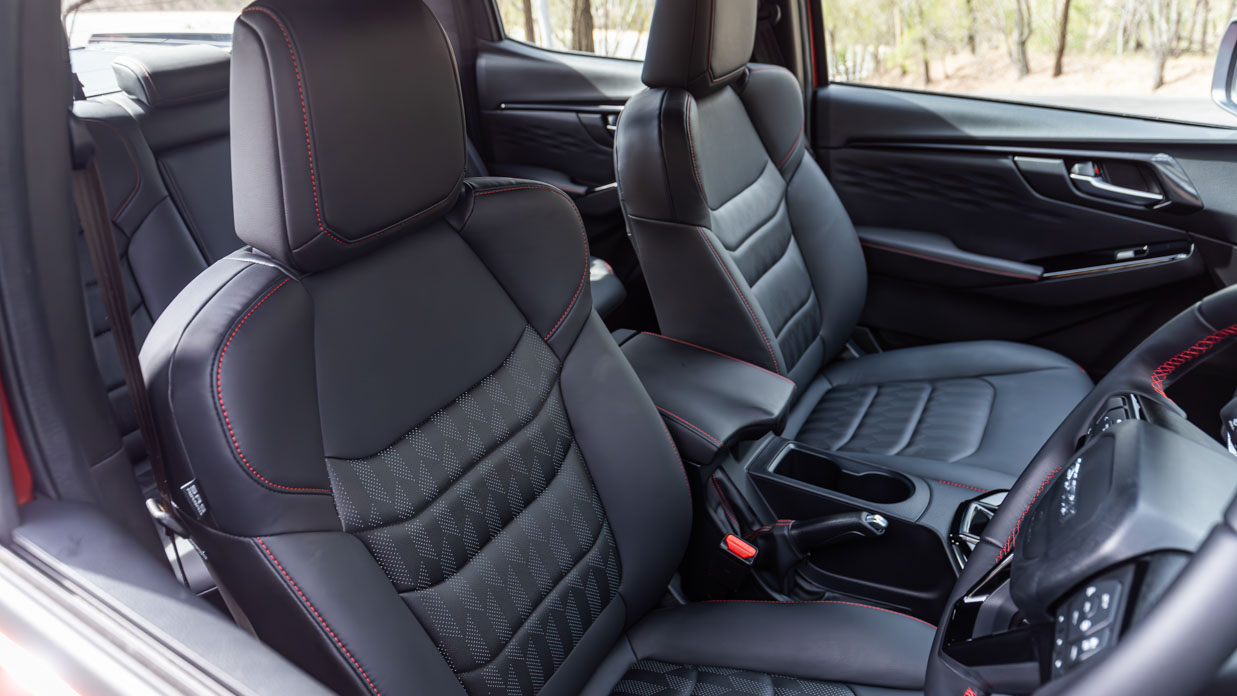
Climbing into the back reveals a decent amount of space for family buyers and sitting behind my own driving position at 183cm I was fairly comfortable. More USB C ports, airvents and a litany of grab handles also make the experience nicer.
The real highlight though is the ability to lift up the rear seats in a 40/60 split, similar to a Hilux, providing the ability to store everyday items like suitcases or shopping without throwing them in the tray where they’ll slide around.
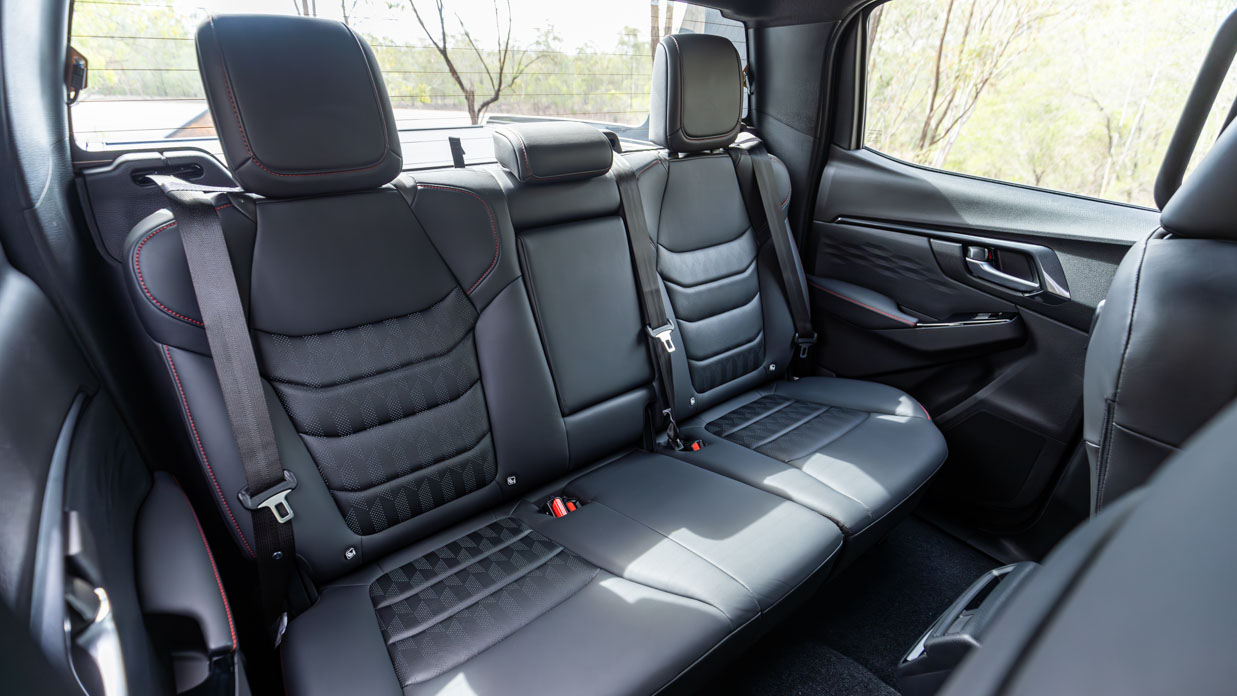
Finally, the rear tray stands out in its segment by having a standard-fit assisted tailgate though the tray itself only features two-tiedown points in grades like the X-Terrain which has a roller-tonneau cover.
Those that don’t have up to four, which is better but it’s still inferior to models like the Nissan Navara which have a sliding tie-down system in addition to these fixed points.
The current-generation D-Max was one of the very first to go through ANCAP’s stringent 2020 protocols that saw a significantly greater focus on active safety tech. It performed well, which has made it a popular choice among family buyers.
In testing, which was updated in 2022 following further upgrades, the D-Max scored the following:
During our initial drive of the D-Max we spent the bulk of our time off-road so we can’t speak to the claimed improved calibration of the lane-keep assistance technology but look forward to doing so in future testing.
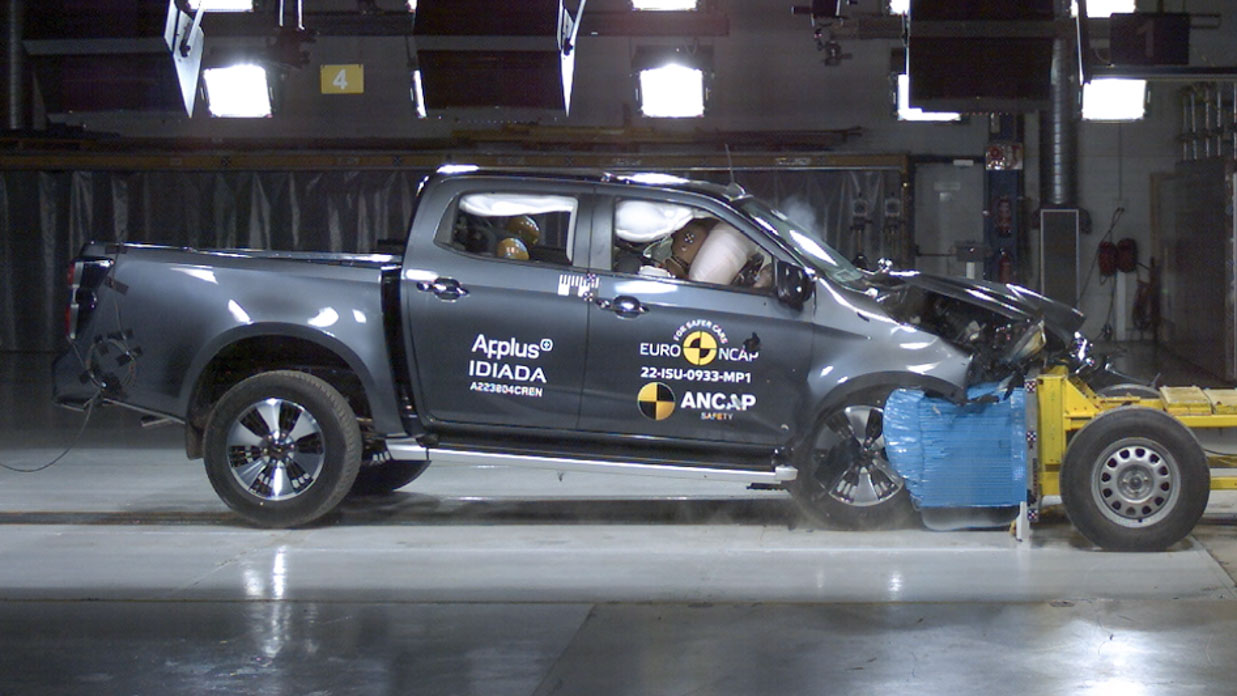
Isuzu has upgraded the central 3D stereo camera with the ability to have a longer and wider field of view, with greater ability to spot smaller objects like pedestrians and cyclists. As a result, we’re told the performance of forwards AEB is greatly improved.
Rear-cross traffic alert with brake assistance has also been fitted to help avoid collisions with other cars when reversing out of front-in car parks, but unlike the new-generation Mitsubishi Triton, reversing AEB to detect stationary objects or people is still missing.
Isuzu has made the move to revise its capped price servicing program to a slightly shorter but more affordable five-year, 75,000km, with a cost of $449 per service or $2245 over the entire period.
Servicing intervals of every 12 months or 15,000km, which is significantly longer than a Toyota Hilux that also features a significantly shorter capped price servicing program of three years, 60,000km.
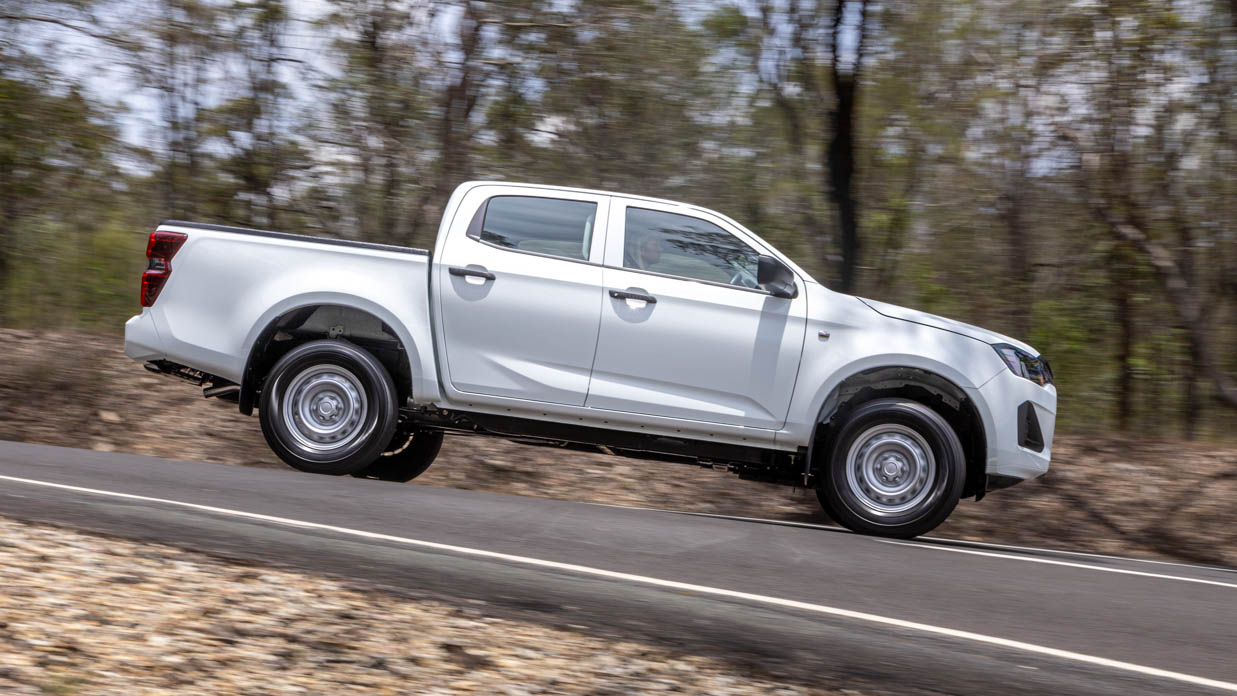
The D-Max comes with a six-year, 150,000km warranty which is decent in terms of time but might be an issue if you’re habitually travelling long distances.
Isuzu says fuel consumption sits at 8.0L/100km for most dual-cab, automatic-equipped 4×4 grades with 7.7L/100km given for 4×2 models. The 1.9L turbo-diesel cuts consumption down to 6.9L/100km in 4×4 guise.
We may see more of the 1.9-litre engine in future as it produces about 13 percent less CO2 than the larger 3.0-litre. CO2 ratings form the basis of a proposed new fleet average emissions system carmakers could face in Australia from 2025 with penalties for breach.
When launched in 2020, third-generation D-Max was really the first vehicle to kick off a new generation of utes that raised the bar on key areas such as safety that had been so neglected by the segment for so long.
Since then the Ranger, Amarok and Triton have launched in Australia and diluted the D-Max’s competitive advantage. This facelift is designed to keep pace with the competition.
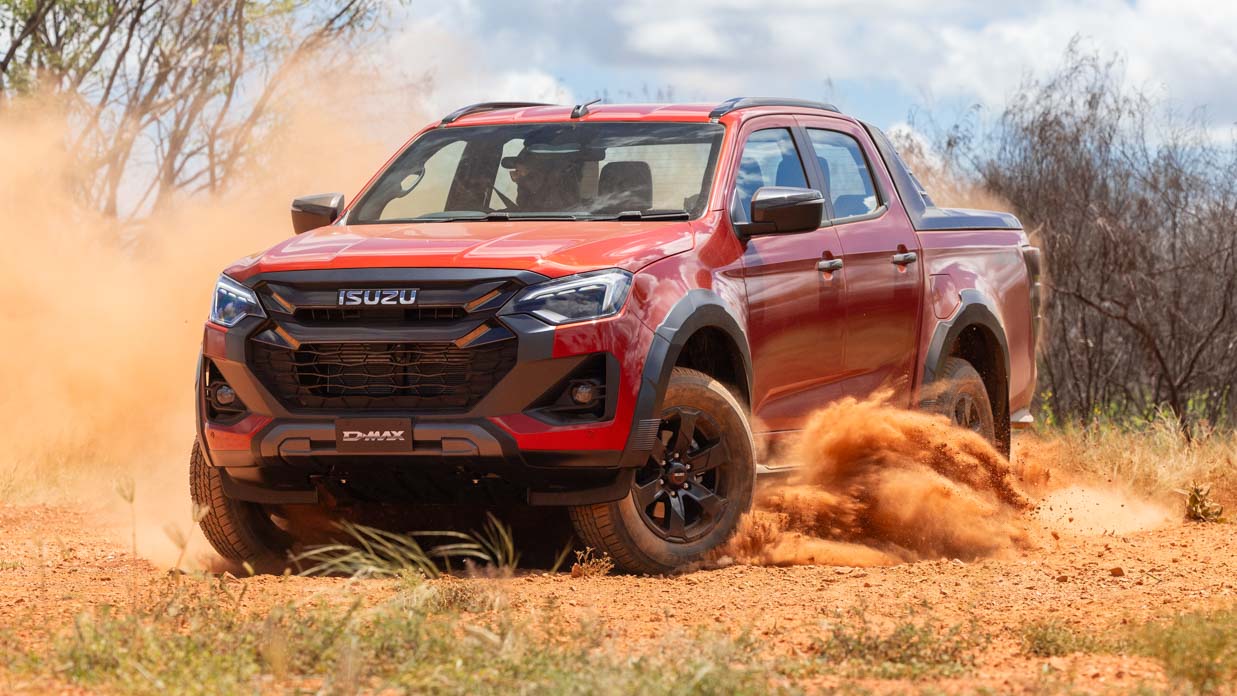
So have they pulled it off? In some ways, yes.
By focusing on a few key issues of customer complaints, such as the multimedia system and off-road traction control, and leaving everything else alone, the D-Max is likely to continue its impressive sales streak.
That’s good news for existing D-Max customers, and if this model’s key strengths in areas such as towing strike are relevant to you then perhaps it might be worth upgrading from the pre-facelifted model.

Isuzu is clearly not worried about selling the flashiest or fastest ute in the segment and the D-Max appears to be content to allow the likes of Ranger, Amarok and upper trims of the Hilux sit above it in terms of performance.
But among a field of newer and arguably more impressive utes, the D-Max arguably needs more to stand out, be that a flagship off-road variant, advanced features like full-time 4WD or whatever else if it wants to remain among the best for years to come.
About Chasing cars
Chasing Cars reviews are 100% independent.
Because we are powered by Budget Direct Insurance, we don’t receive advertising or sales revenue from car manufacturers.
We’re truly independent – giving you Australia’s best car reviews.
The estimate provided does not take into account your personal circumstances but is intended to give a general indication of the cost of insurance, in order to obtain a complete quote, please visit www.budgetdirect.com.au. Estimate includes 15%^ online discount.
^Conditions Apply
Budget Direct Insurance arranged by Auto & General Services Pty Ltd ACN 003 617 909(AGS) AFSL 241 411, for and on behalf of the insurer, Auto & General Insurance Company Limited(ABN 42 111 586 353, AFSL 285 571).Because we don’t know your financial needs, we can’t advise you if this insurance will suit you. You should consider your needs and the Product Disclosure Statement before making a decision to buy insurance. Terms and conditions apply.
Indicative quote based on assumptions including postcode , 40 year old male with no offences, licence suspensions or claims in the last 5 years, a NCD Rating 1 and no younger drivers listed. White car, driven up to 10,000kms a year, unfinanced, with no modifications, factory options and/or non-standard accessories, private use only and garaged at night.
^Online Discounts Terms & Conditions
1. Discounts apply to the premium paid for a new Budget Direct Gold Comprehensive Car Insurance, Third Party Property Only or Third Party Property, Fire & Theft Insurance policy initiated online on or after 29 March 2017. Discounts do not apply to optional Roadside Assistance.
2. Discounts do not apply to any renewal offer of insurance.
3. Discounts only apply to the insurance portion of the premium. Discounts are applied before government charges, taxes, levies and fees, including instalment processing fees (as applicable). The full extent of discounts may therefore be impacted.
4. We reserve the right to change the offer without notice.